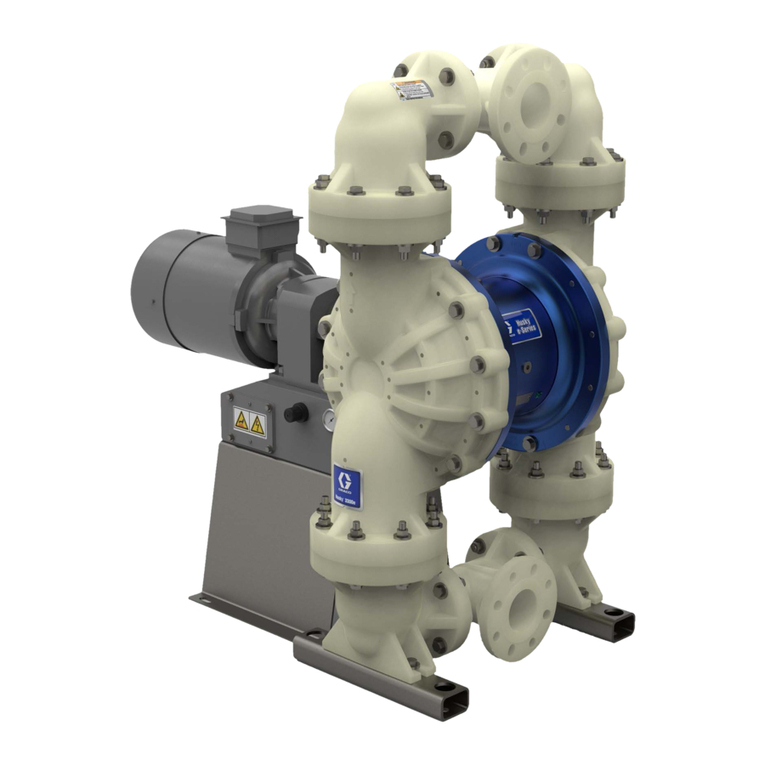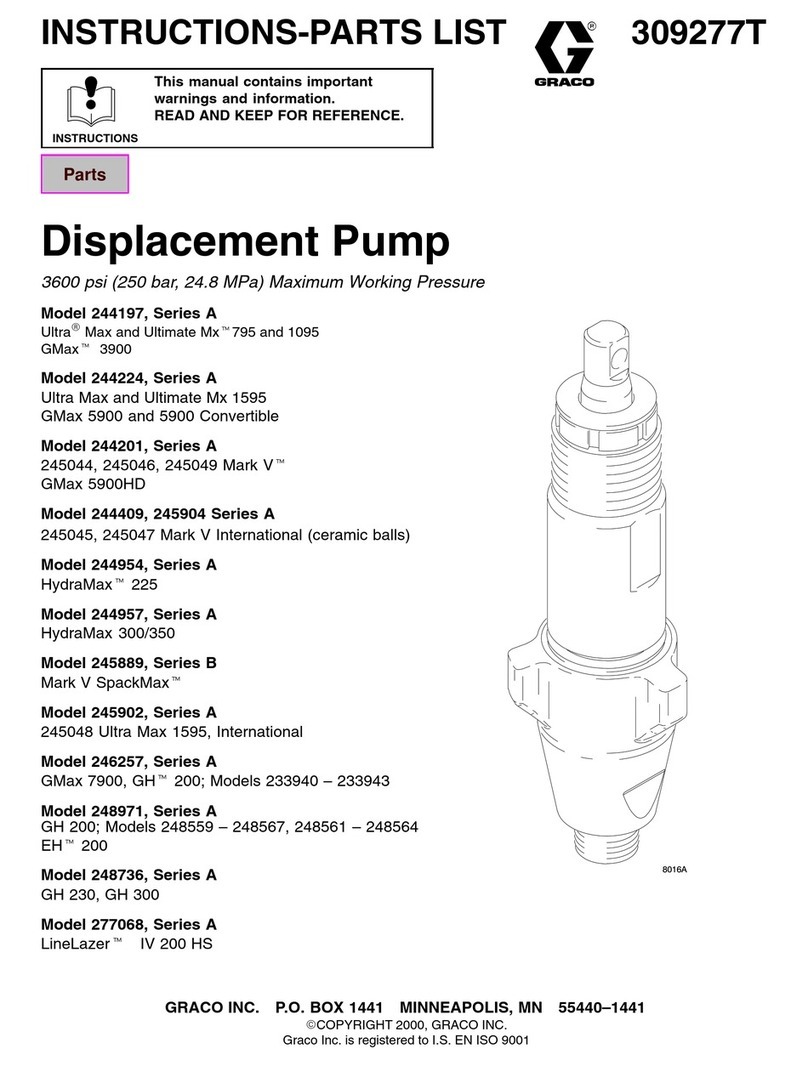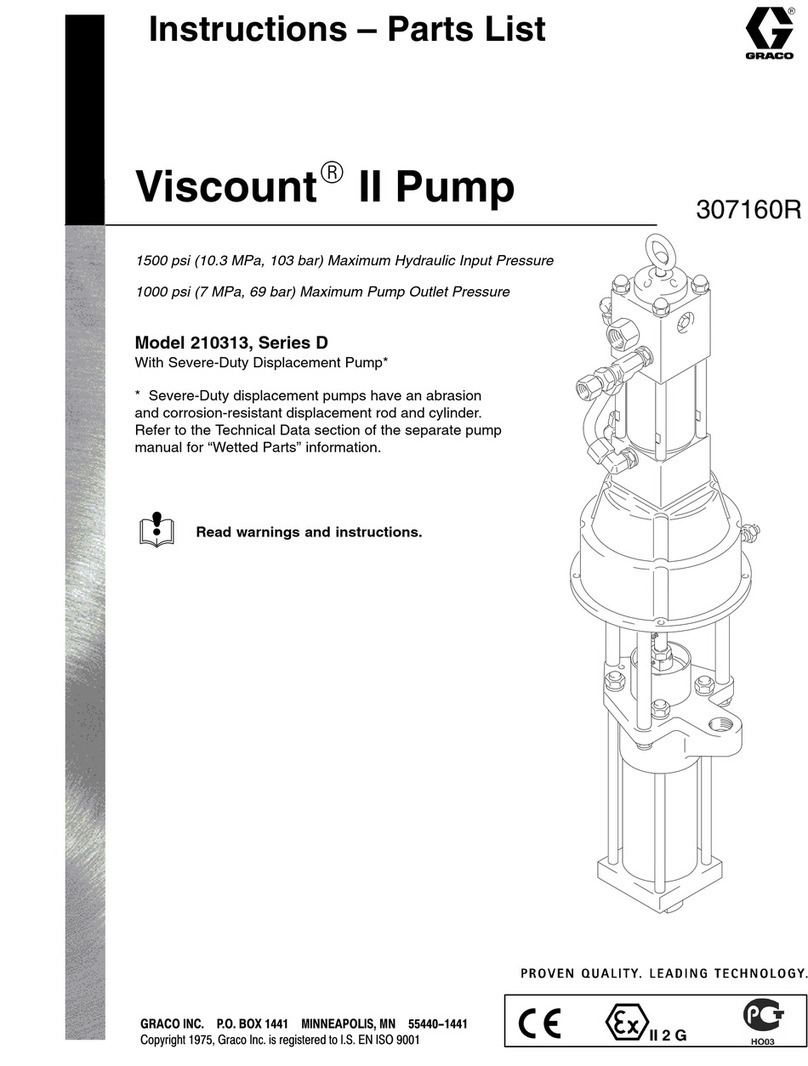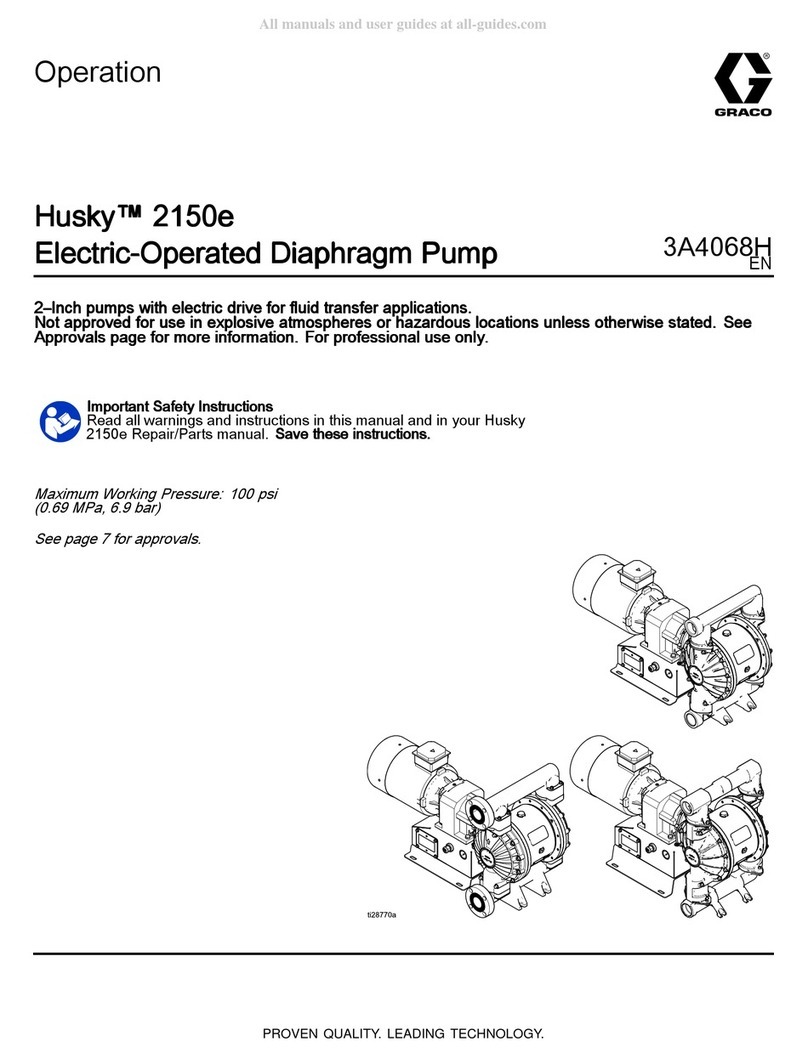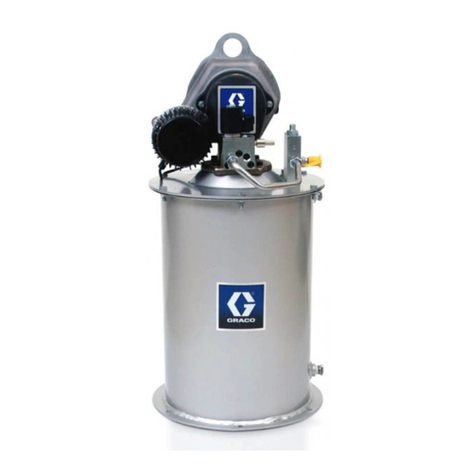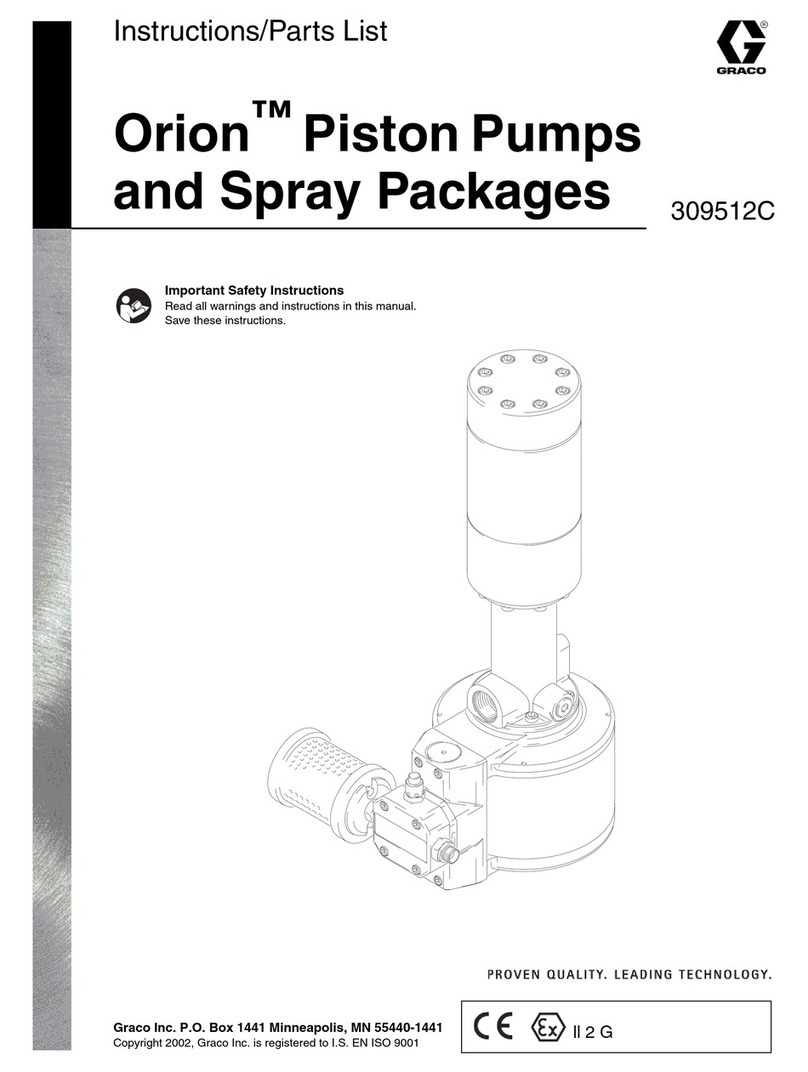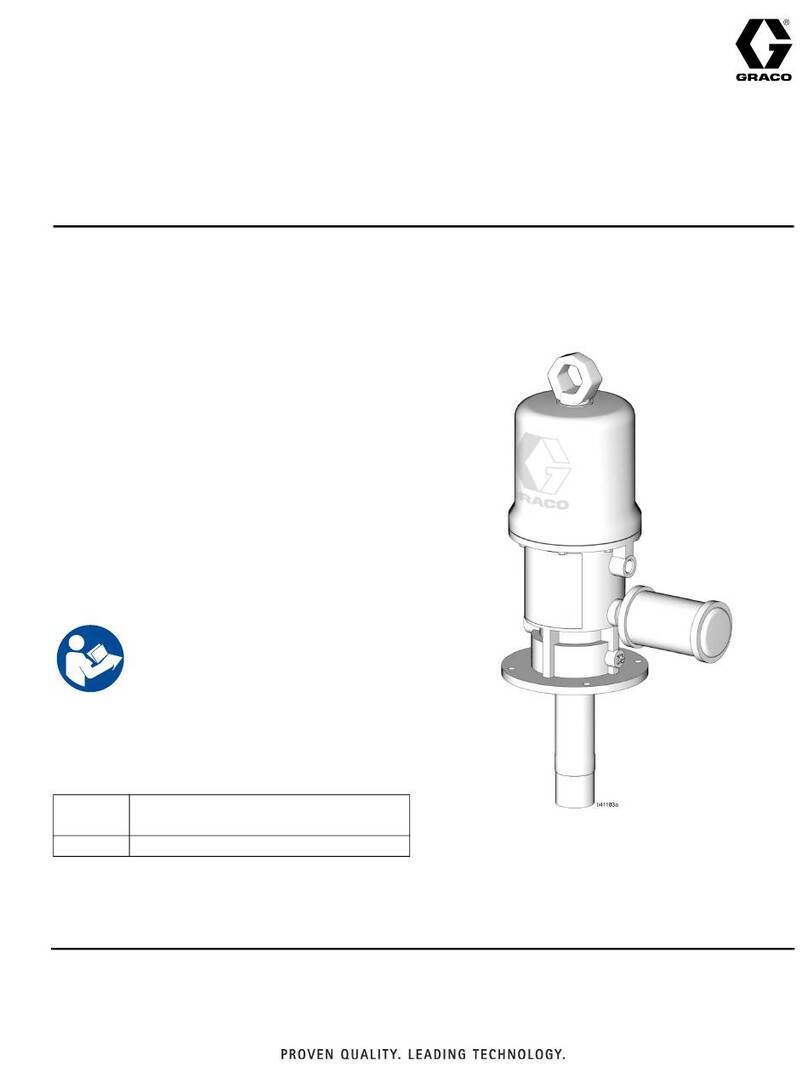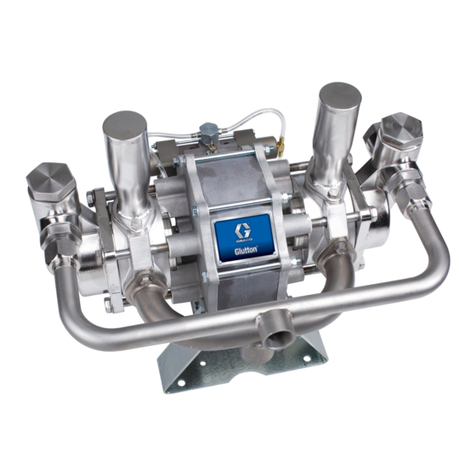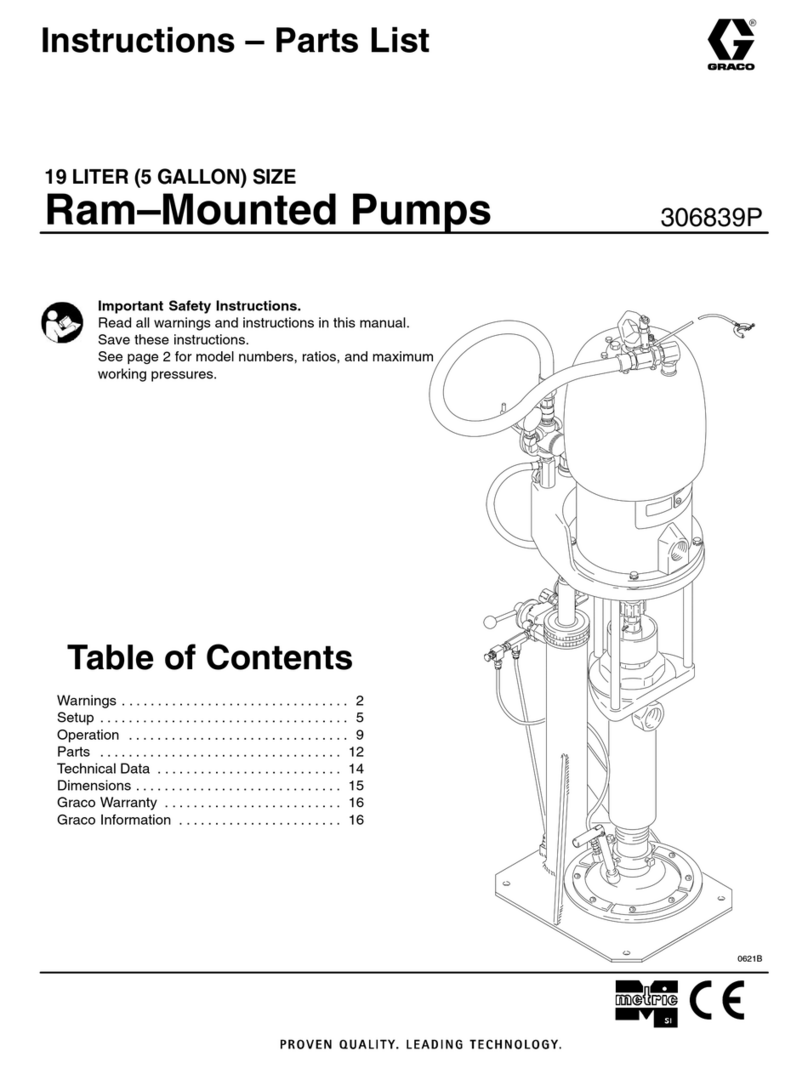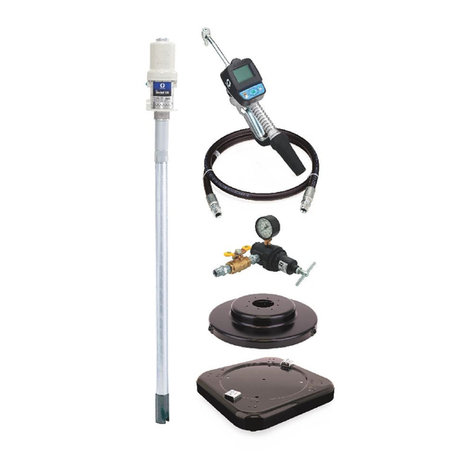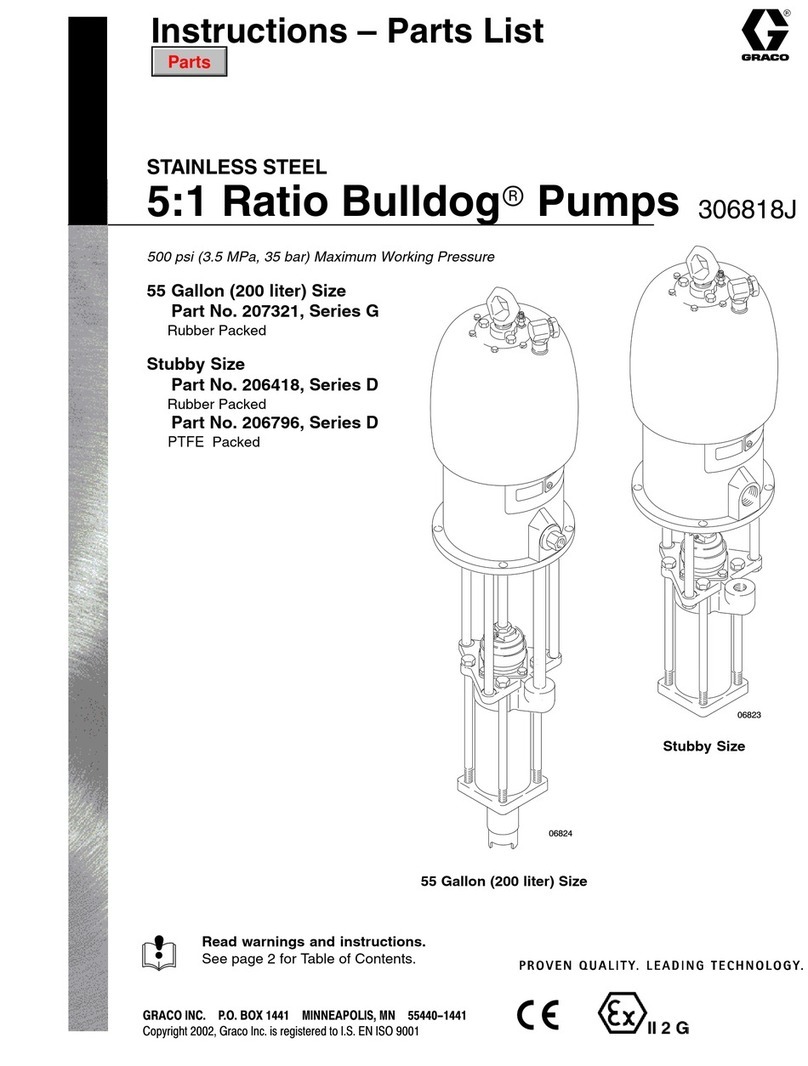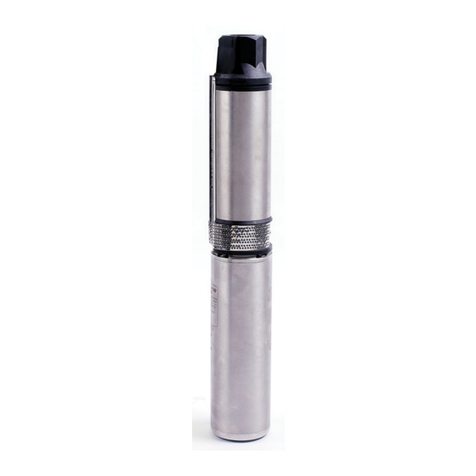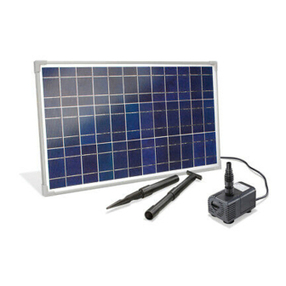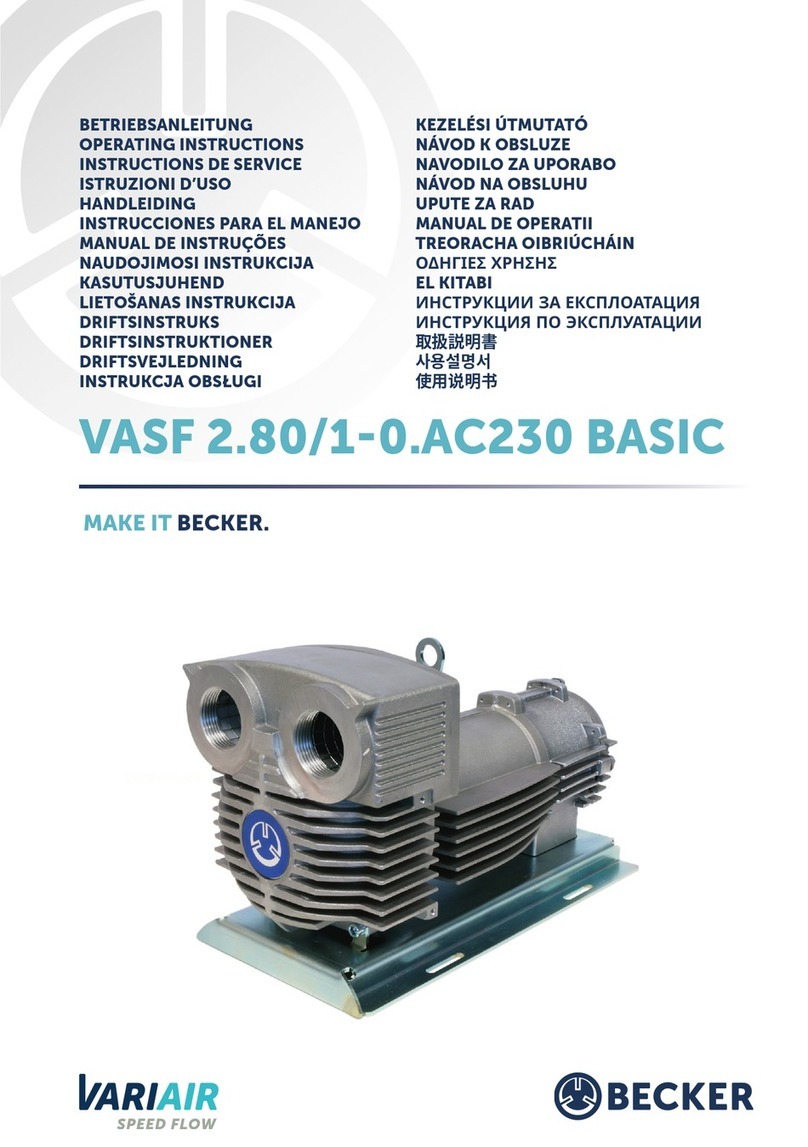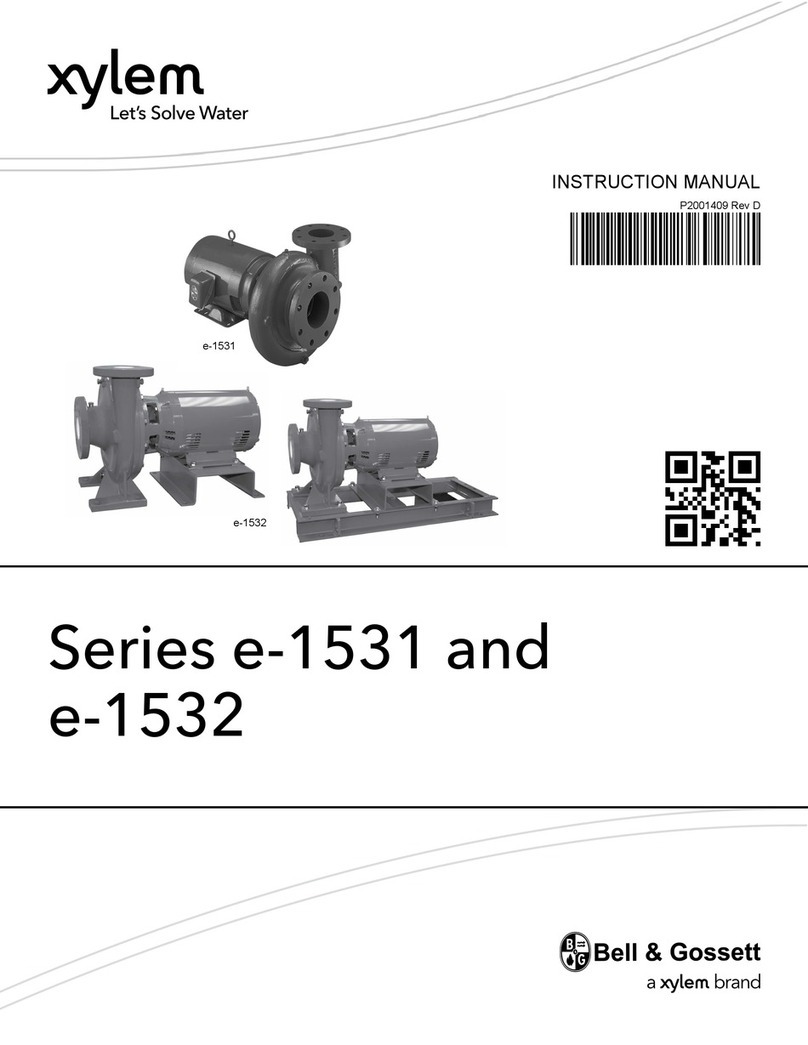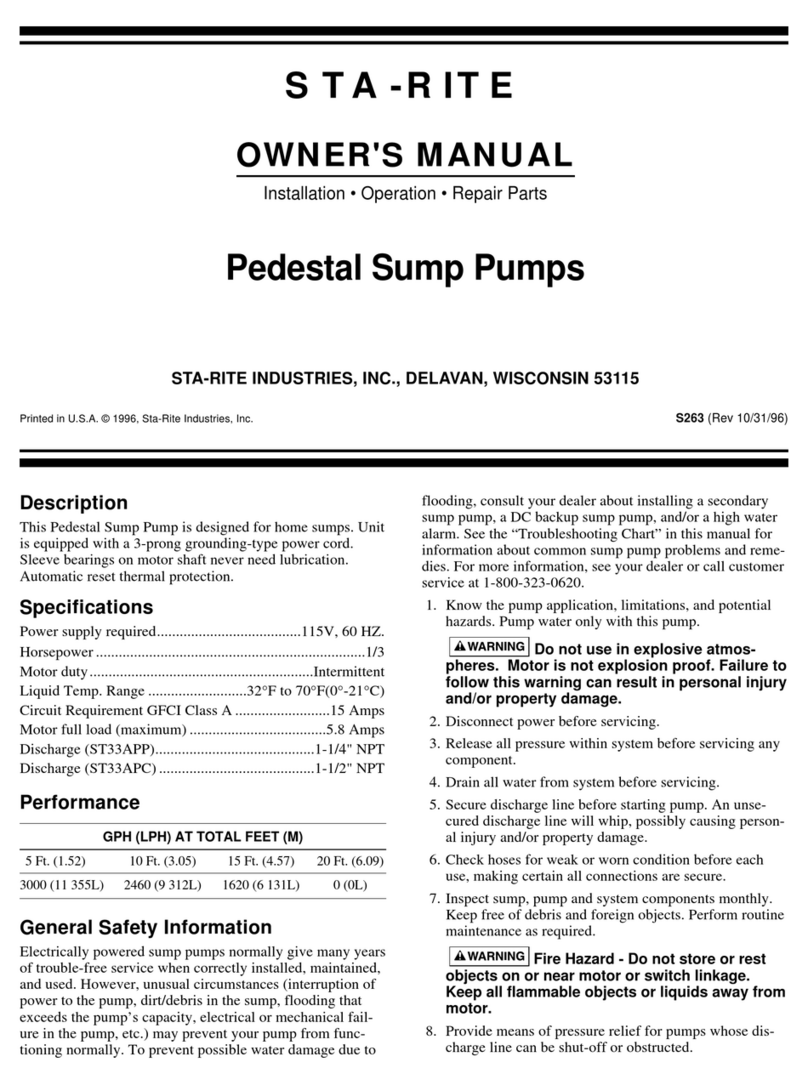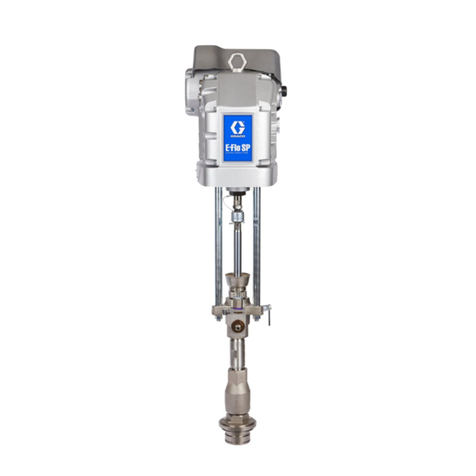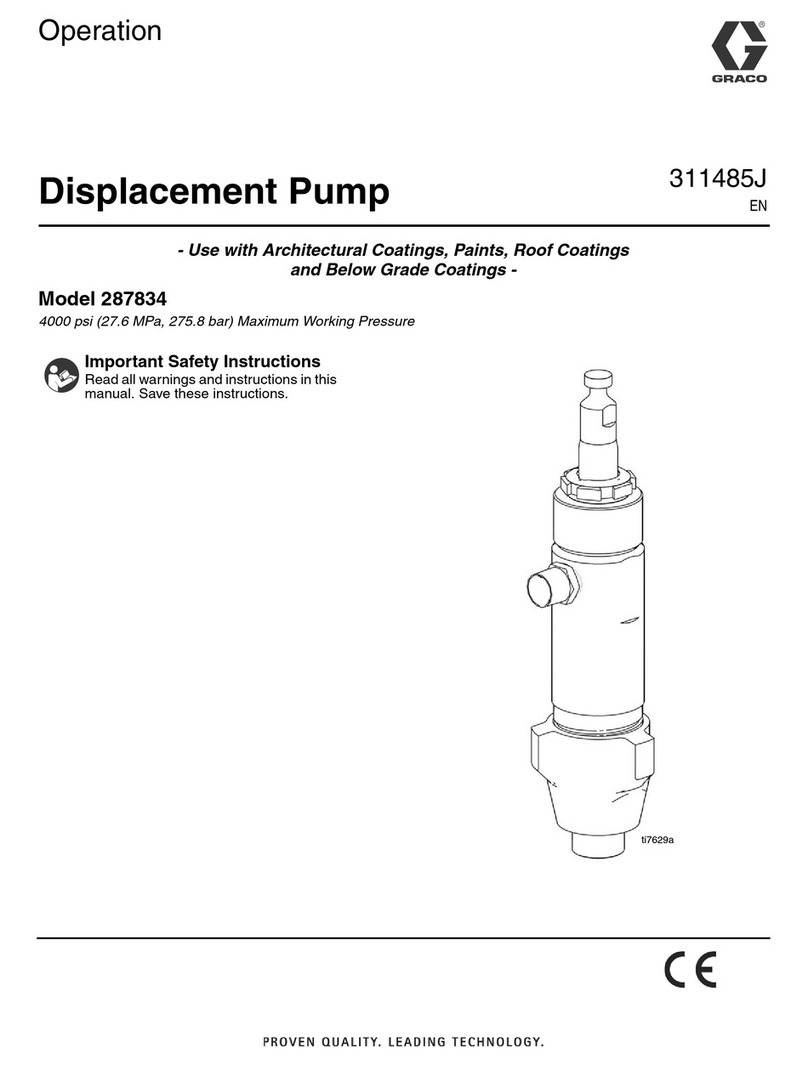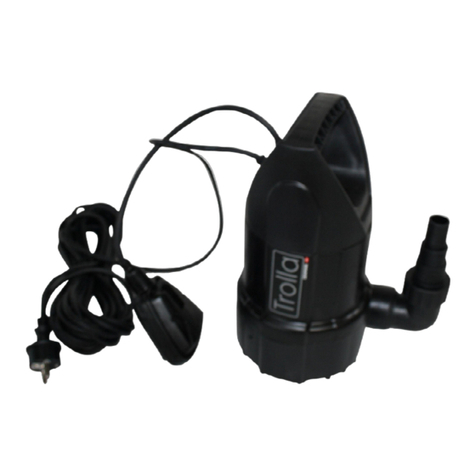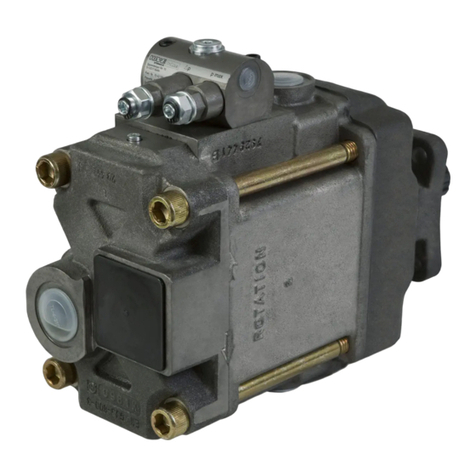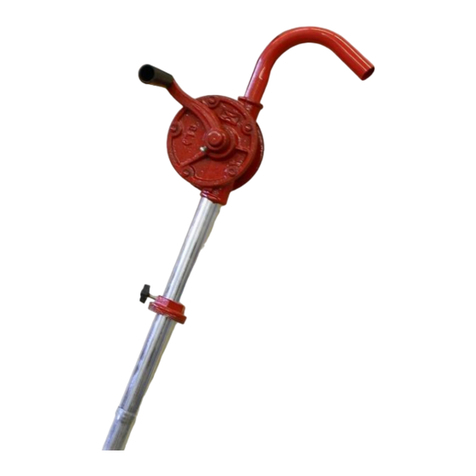
HIGH
PRESSURE
SPRAY
CAN CAUSE SERIOUS INJURY.
FOR PROFESSIONAL USE ONLY. OBSERVE ALL WARNINGS.
.
Read
and
understand
all
instruction
manuals
before
operating
equipment.
FLUID
IMJECTIBAI
HAZARD
General
Safety
This equipment generatesveryhighfluid pressure. Sprayfrom
the gun,leaks or rupturedcomponents can inject fluid
through yourskinand into yourbodyandcauseextremely
serious bodily injury, includingthe needfor amputation. Also,
fluid injected orsplashed intothe eyes cancauseserious
damage.
NEVER pointthespray gun or dispensing valveat anyone orat
anypart of the body. NEVER put hand or fingersover the
spray tip
or
nozzle. NEVER try to"blow backmaterial: this is
NOT an
air
spray system.
when spraying.
If using
a
spray
gun,
ALWAYS have the tip guard
in
place
ALWAYS follow the Pressure Relief Procedure, below,
before
cleaningor removingthespray tip or nozzleorservicing
any system equipment.
Spray
Gun
or
Dispensing
Valve
Safety
Devices
each use.
Do
not removeor modify any part
of
the gun; this
Besure all gun safetydevices areoperatingproperly before
cancause
a
malfunction and result in serious bodily injury.
Safety Latch
Whenever you stop spraying, even for
a
moment, always set
the gun safety latch
in
the closedor "safe" position, making
thegun inoperative. Failuretoset thesafetylatchcan result in
accidental triggering of the gun.
Diffuser (Spray
guns
only)
The gun diffuser breaksupspray and reducesthe risk of injec-
tion when the tip is not installed. Check diffuseroperation
regularly.Follow the PressureRelief Procedure, below.
thenremovethe spray tip. Aimthe gun into
a
metalpail,
holding the gun firmly to.the pail. Using the lowestpossible
to an irregular stream, replacethe diffuser immediately.
pressure, trigger the gun. Ifthefluid emitted
is
not
diffused in-
..
.
NEVER try tostop or deflect leaks with your hand or body. ALWAYS have the tip guard In placeon the spray gun while
Tip
Guard
(Spray
guns
only1
before each use.
Besure equipmentsafety devicesare operatingproperlyspraying.The tip guardalertsyou to the injection hazardand
helps prevent accidentally placing your fingers or any part of
vour bodv closetothe mrav
tin.
Medlcal
Treatment
If any fluid appears to penetrateyour skin,get
Spray
Tip
and
Nozzle
Safety
~"
,
~ ~~~ ~~ ~~
.~
~,
~~r
EMERGENCY MEDICAL CARE AT ONCE.
DO NOTTREAT
AS
A SIMPLE CUT.
Use extremecaution when cleaningor changing spray tips or
Tell the doctor exactlvwhat fluid was iniected.For treatment nozzles. If the spraytip or nozzle clogs while spraying, engage
thegunsafetylatchimmediately. ALWAYS follow the
instructions,haveyour doctor call the
.
NATIONAL POISON CENTER NETWORK
(412)681"9
Pressure Relief Procedureand then remove the spraytip to
clean
it.
pressure is fully relieved andthe gun safety latch isengaged.
NEVER wipe off build-up around the spray tip or nozzle until
____
~_____
~~
Pressure
Relief
Procedure
To reduce
the
risk of seriousbodilyinjury,includinginjectionorinjury from movingparts,always follow thisprocedure
whenever youshut
off
the pump, whenchecking or servicing any part ofthe spray system, when installing, cleaningor chang-
ingspray tips or nozzles, and whenever you stop spraying.
(1)
Engagethe gun safety latch.
12)
Shut off theair tothe pump.
13)
Closethe bleed-type masterair valvetopreventthepumpfromstarting accidentally.
(41
Disengagethegunsafety latch.(5).Hold
a
metal partof the gunfirmly to the sideof
a
metal pail, and trigger the guntorelieve pressure.161 Engagethe gunsafety latch.
(7)Openthe pumpoutlet drain valveor bleeder valve,
181
Leavethe drain valve or bleeder valve openuntilyouare readytospray
again.
j
steps
above, VERY SLOWLY
loosen
the
tip
guard retainingnutor hose end coupling and relieve pressure gradually, then loosen
If
you
suspect that the spray tip or hose
is
completely clogged, or that pressure has not been fully relieved after following the
comoletelv. Now
clear
the
ti0
or hose.
~~ ~
EQUPMENT MISUSE
HAZARD
~~ ~ ~~~~
General
Safety
Anymisuseof the sprayequipmentoraccessories,such as
overpressurizing, modifying parts, using incompatible Model
226-250
develops
ZW
psi
I504
barl MAXIMUM
WORKINGPRESSURE
at
150
psi
110
barl incomingair
chemicalsandmaterials,orusing worn or damagedparts,canpressure.
cause them to ruptureand result in injection or other serious
bodilyinjury.fire,explosion or property damage. Model
226-251
develops
24w
psi
1165
barl MAXIMUM
NEVER alter or modify any part of this equipment; doing
so
WORKINGPRESSURE
at 120 psi
I8
bar)incoming air
pressure.
could cause
it
to
malfunction. Model
226-252
develops
4Bw
psi
1230
barl MAXIMUM
CHECK allsprayequipmentregularlyandrepairorreplace
WORKINGPRESSURE
at
120
psi
18
bar1 incomingair
worn
or
damaged pans immediately. pressure.
System
Pressure
Besure that a11 sprayequipmentandaccessoriesarerated to
Model
226-249
develops
4320
psi
13W
barl MAXIMUM
withstand the maximumworking pressureofthissprayer.
DO
pressure.nent or accessoryused
in
the system.
WORKINGPRESSURE
at
180
psi
112
bar)incomingairNOT exceed the maximum working pressure
of
anycompo-
2
306-839
